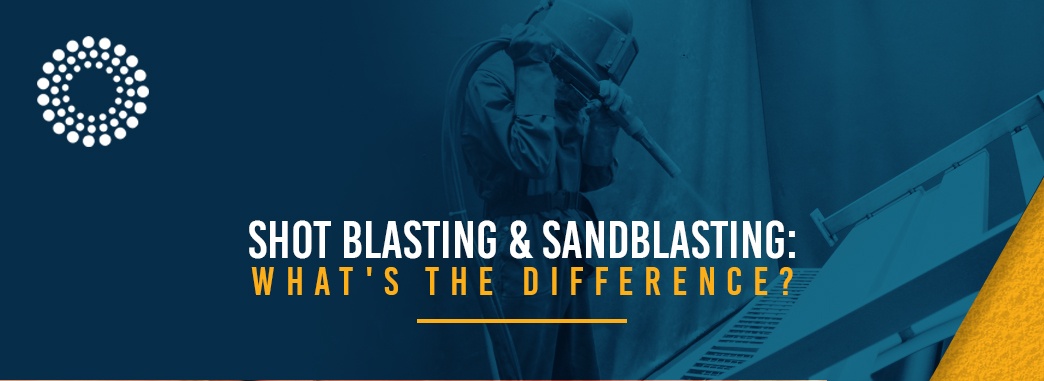Many people confuse sandblasting and shot blasting, thinking they are the same process. However, these two methods are distinct and serve different purposes in surface preparation and cleaning. Understanding the difference between them can help you choose the right technique for your project. The main difference lies in how the abrasive media is applied. Sandblasting uses compressed air to propel the abrasive material—such as sand, glass beads, or aluminum oxide—toward the surface being treated. On the other hand, shot blasting relies on a mechanical system, often using a spinning wheel that generates centrifugal force to throw the abrasive material at the surface. This makes shot blasting more powerful and suitable for heavier-duty applications. Interestingly, "sandblasting" is now a bit of a misnomer. While it was once common to use sand, today's industry has moved away from silica-based materials due to health and safety concerns. Silica dust is hazardous when inhaled and can lead to serious respiratory issues like silicosis and lung cancer. Instead, modern abrasives such as steel grit, glass beads, and organic materials like walnut shells and corn cobs are used for safer and more effective results. Sand was once the go-to abrasive due to its availability, but it had several drawbacks. It often contained impurities and moisture, making it difficult to handle effectively. Additionally, the fine particles created a lot of dust, which posed both environmental and health risks. OSHA regulations have also made it harder to use silica sand in abrasive blasting operations. While not entirely banned, strict controls are in place to limit exposure. As a result, most professionals now opt for safer alternatives that offer better performance and control. Sandblasting involves using compressed air to shoot abrasive media onto a surface. This method is ideal for delicate or sensitive materials where a gentler approach is needed. It’s commonly used for cleaning auto parts, restoring rusted metal, or preparing surfaces for painting or powder coating. Although the term "sandblasting" still exists, the actual media used has evolved. Today, operators can choose from a wide range of materials, including glass, plastic, and mineral-based abrasives. These options are not only safer but also more versatile and efficient. Shot blasting is a more aggressive method that uses mechanical force rather than compressed air. A spinning wheel accelerates the abrasive media, such as steel shot or grit, and throws it against the surface. This method is perfect for heavy-duty tasks, like removing rust from large metal structures or preparing thick steel components for finishing. Shot blasting is often used in industrial settings where efficiency and power are crucial. The process is highly controlled, and containment systems are essential to prevent damage from flying debris. There’s no one-size-fits-all answer. The choice depends on the material you're working with and the desired finish. Sandblasting is generally more gentle and cost-effective, making it ideal for smaller or more delicate projects. Shot blasting, while more complex and expensive, is better suited for tough, large-scale jobs that require deep cleaning and strong surface preparation. For example, if you’re cleaning electronics or soft metals, sandblasting with glass beads or organic media would be the way to go. But if you're dealing with heavy machinery or structural steel, shot blasting with steel grit would be more appropriate. Sandblasting equipment includes air blast rooms, portable stations, blast cabinets, and bulk systems. These tools allow for precise control over the blasting process and ensure efficient media recovery. Some systems even use water to reduce heat and minimize dust, offering a wet blasting option. Shot blasting systems typically include tumble blast machines, swing table wheels, and cylinder blasters. These machines use mechanical force to propel the abrasive media, making them ideal for high-volume or heavy-duty applications. Selecting the right abrasive media is critical. Factors like hardness, density, shape, and size all affect the outcome. Common materials include steel shot, glass beads, aluminum oxide, silicon carbide, and organic options like walnut shells and corn cobs. Whether you need sandblasting or shot blasting, it’s important to work with experienced professionals who understand the nuances of each process. At Finishing Systems, we specialize in both techniques and can help you achieve the best results for your specific needs. If you want to learn more about our services or need guidance on choosing the right abrasive media, feel free to contact us. Call us at 800-582-3693 or visit our website today. Heat insulation sun visor,Plastic Honeycomb Panel,Honeycomb Panel YANGZHOU MAXTONE COMPOSITE CO.,LTD. , https://www.maxtonetruckbody.com
Shot Blasting vs. Sandblasting: What’s the Difference?
Updated: February 27, 2024
Why Is Sand Rarely Used Today?
What Is Sandblasting?
What Is Shot Blasting?
Which One Is Better: Sandblasting or Shot Blasting?
Equipment Used in Sandblasting
Equipment Used in Shot Blasting
Choosing the Right Abrasive Media
Final Thoughts
Shot Blasting & Sandblasting: What’s the Difference?